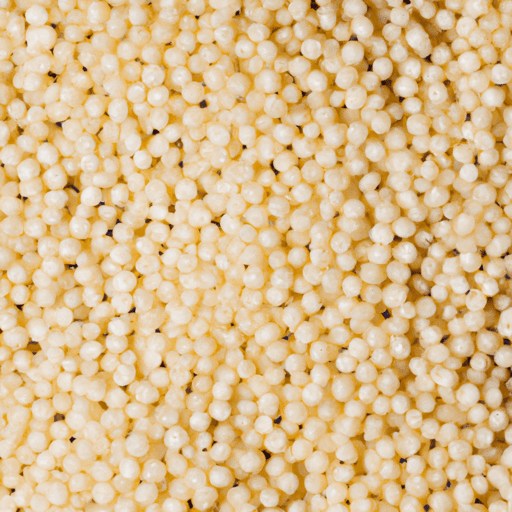Acini di Pepe: Small yet Mighty Pasta
If you are a pasta enthusiast, you might be familiar with the more common varieties like spaghetti, penne, or tortellini. However, have you ever heard of acini di pepe? This tiny pasta has a unique charm and versatility that makes it a must-try for any pasta lover. In this blog post, we will delve into the world of acini di pepe, exploring its taste, common uses in cooking, nutritional value, and fascinating history and facts.
Taste and Texture
Acini di pepe, which means “seeds of pepper” in Italian, is a type of pasta that resembles small spherical grains. Despite its unassuming appearance, these tiny pasta pearls pack a delightful taste and texture. When cooked to al dente, acini di pepe offers a tender and slightly chewy bite. Its neutral flavor allows it to soak up the surrounding ingredients or sauces, making it a versatile addition to countless dishes.
Common Uses in Cooking
Due to its diminutive size and quick-cooking nature, acini di pepe is most commonly used in soups. One of the most classic recipes featuring this pasta is the beloved Italian wedding soup, where the tiny pearls add both texture and substance. The soup’s broth infuses the pasta with rich flavors, transforming it into small flavor-packed spheres that burst in your mouth. Acini di pepe can also be found in comforting chicken noodle soups or creamy minestrone.
Beyond soups, creative cooks have found additional uses for this versatile pasta. Some preparations use acini di pepe as a substitute for rice in dishes like risotto or pilaf. This pasta also works wonders in salads, acting as a delightful textural component when paired with fresh vegetables and dressings.
Nutritional Value
From a nutritional standpoint, acini di pepe provides a modest boost of energy. As with most pasta varieties, it predominantly consists of carbohydrates, offering a source of sustained energy. Additionally, it contains a small amount of protein, fiber, and essential minerals like iron and selenium. While not nutritionally dense on its own, acini di pepe contributes to a well-balanced meal when combined with other nutritious ingredients.
History and Fun Facts
The exact origins of acini di pepe remain a mystery, but pasta lovers can thank Italian cuisine for bringing this delightful pasta shape into existence. In Italian households, the skillful hands of many grandmothers have lovingly rolled and shaped acini di pepe by hand for generations. However, it is believed that this pasta shape may have originated in Sicily, a region renowned for its diverse pasta culture.
Interestingly, acini di pepe has crossed culinary borders and found its way into dishes beyond Italy. In the United States, it is most commonly associated with traditional minestrone soups - a testament to the influence of Italian immigrants on American cuisine.
Acini di pepe may be petite, but it holds a world of possibilities in every tiny grain. Its neutral taste, adaptability, and quick-cooking nature make it not only a convenient pantry staple but also a joyful addition to various culinary creations. So, why not explore the realm of acini di pepe and bring this versatile pasta into your own kitchen? Whether you decide to toss it in a comforting soup or use it to reinvent a classic recipe, the delightful taste and texture of acini di pepe are sure to satisfy your pasta cravings.
Acini di Pepe
Origin: Acini di pepe is a type of pasta that originated in Italy. The name “acini di pepe” is Italian and translates to “seeds of pepper.” It is believed to have been created in the late 19th century.
Common Uses: Acini di pepe is primarily used in soups and salads. Due to its small size and quick-cooking nature, it is ideal for adding texture and body to brothy soups or as a base for pasta salads.
Nutritional Benefits: Acini di pepe is made from durum wheat semolina, which provides several nutritional benefits. It is a good source of carbohydrates, protein, and fiber. Additionally, it contains B-vitamins, iron, and magnesium.
Unique Properties: Acini di pepe is characterized by its tiny, spherical shape, similar to that of pepper seeds. It is about 1/8 of an inch in diameter, making it one of the smallest pasta shapes available. This size allows it to cook quickly and absorb flavors from broths or dressings.
Historical Significance: Although acini di pepe is not historically significant in the same way as other ingredients, it is widely used in Italian and American cuisine. Its added versatility and ability to blend well with other ingredients make it a popular choice in various recipes. Over time, it has become a common pantry staple in many households due to its versatility and ease of use.




Use the share button below if you liked it.
It makes me smile, when I see it.